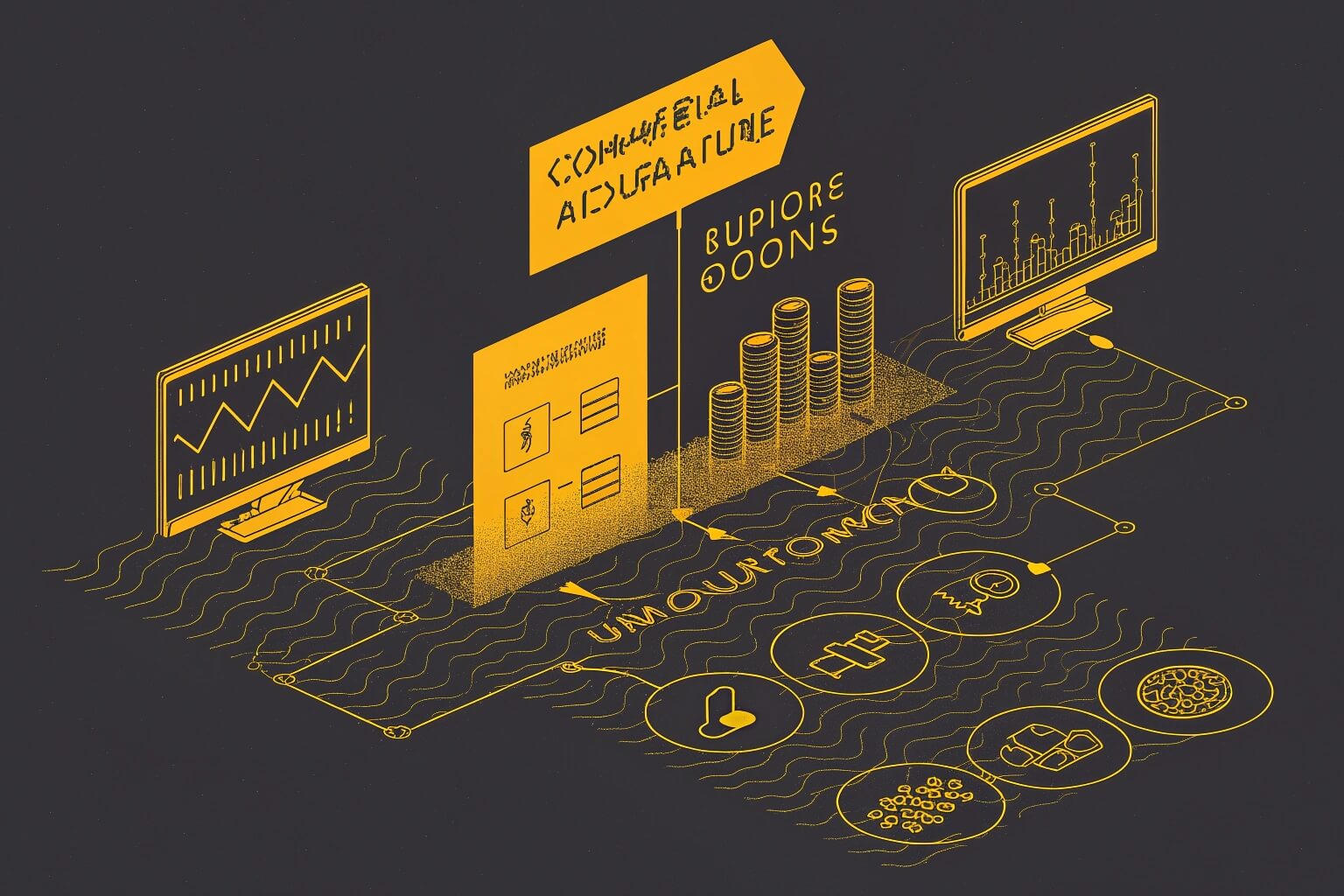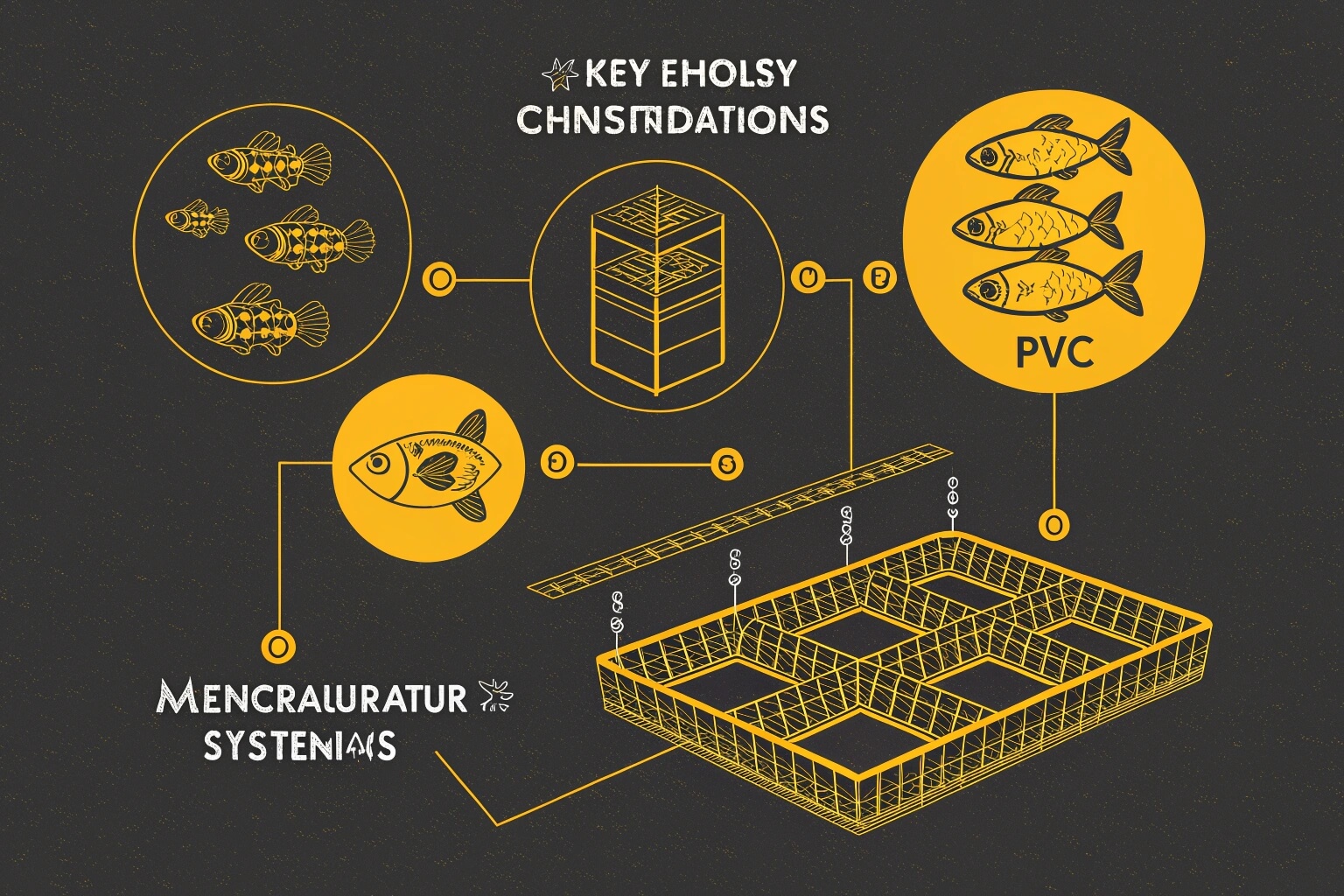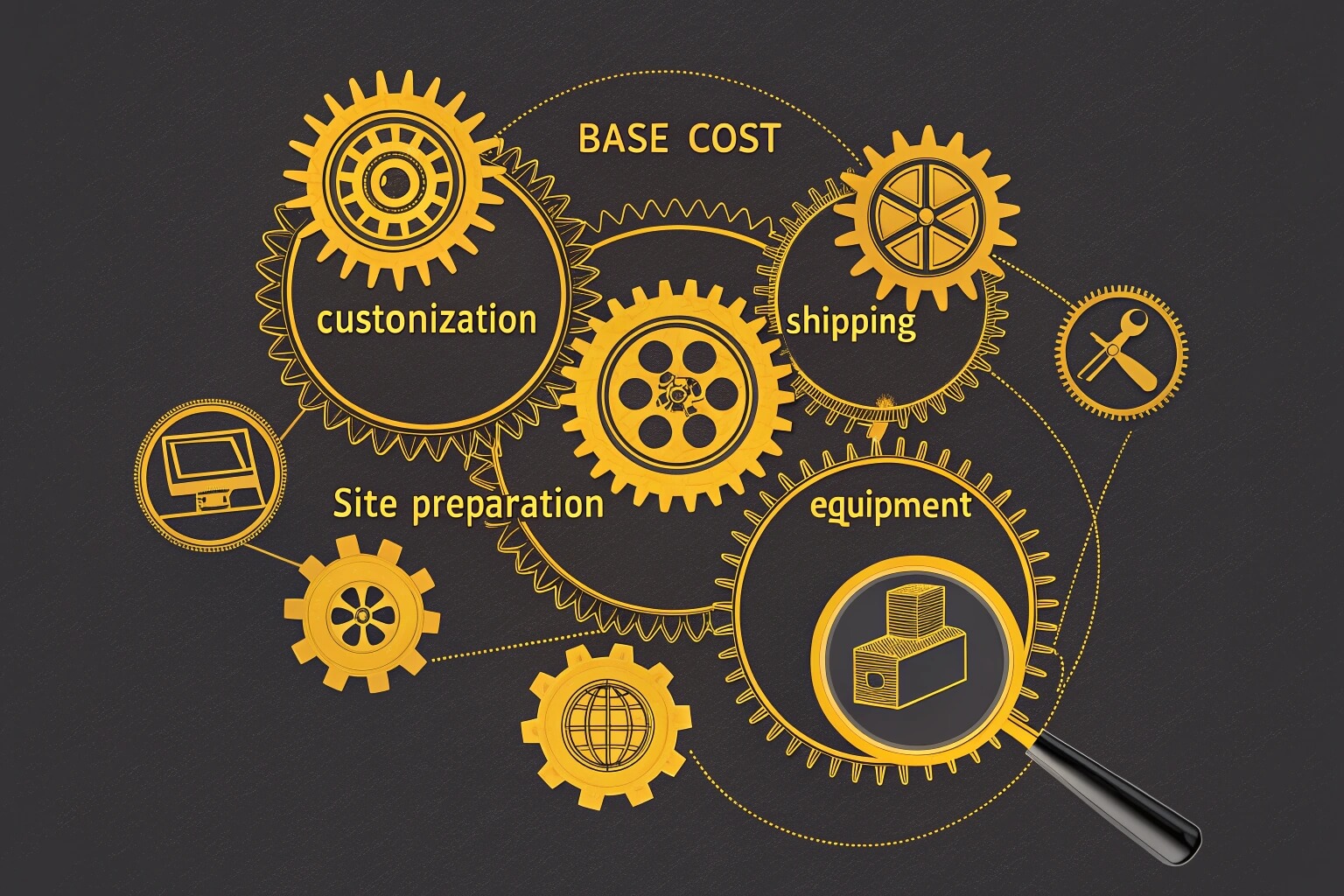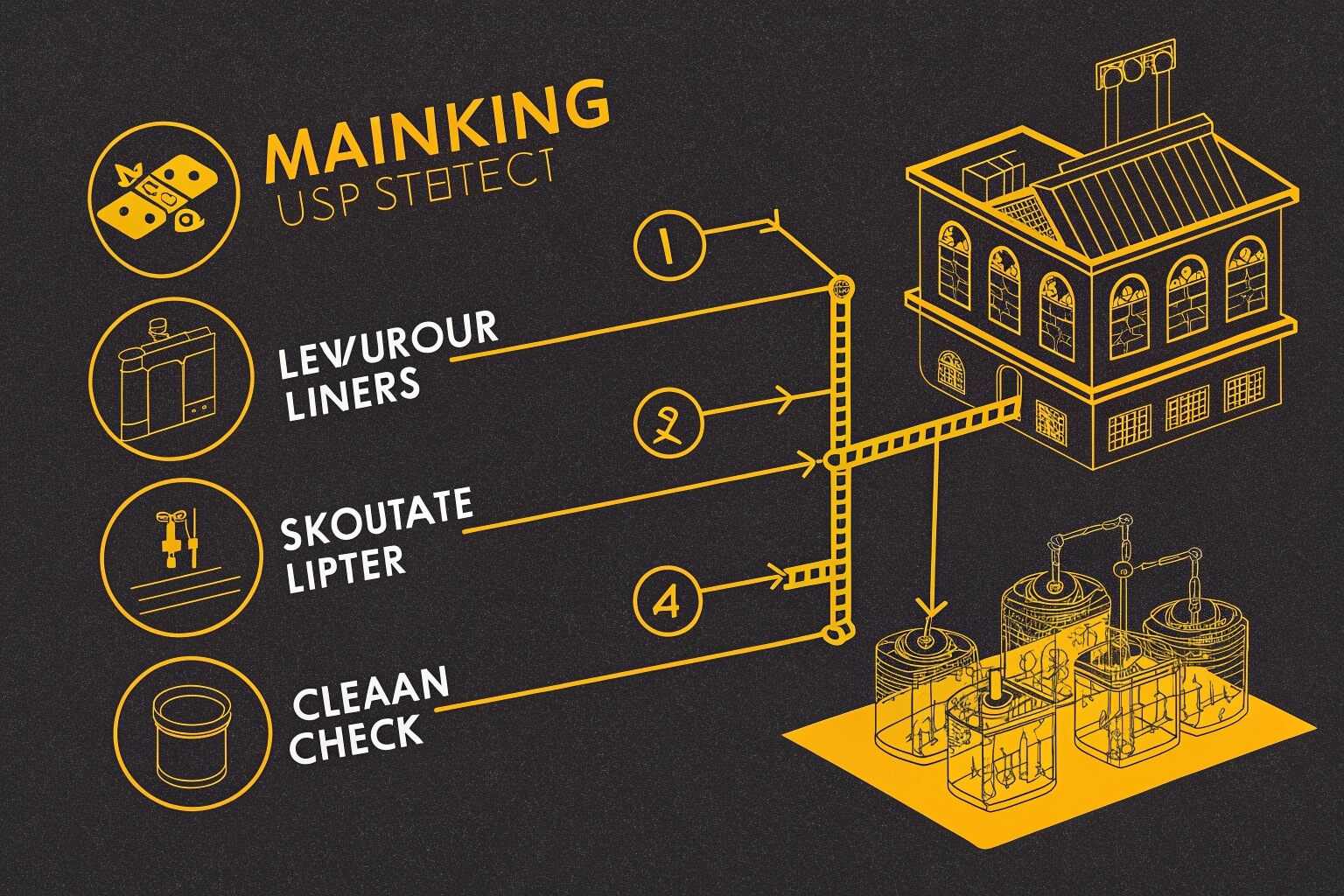Where Can I Buy Large Commercial Fish Tanks?
Starting a fish farm or aquarium? Finding the right large commercial fish tank can be confusing and costly if you choose wrong. Let's simplify your search for the perfect tank.
You can buy large commercial fish tanks directly from manufacturers like us at Bancy Solutions, specialized aquaculture suppliers, or sometimes large equipment dealers. Direct purchase often allows for better customization and potentially better pricing for your specific fish farming or aquarium needs.

Knowing where to look is the first step. But how do you choose the right tank, find reliable suppliers, manage costs, and ensure it meets your exact needs? Let's dive deeper into these important questions.
How Do I Choose the Right Tank for My Fish Farming Needs?
Picking a commercial fish tank feels overwhelming with all the choices. The wrong tank can harm your fish or complicate operations. Here’s how to select the best one confidently.
Choose the right tank by considering your fish species, stocking density, available space, and water management needs. Key factors include material durability (like PVC liners with sturdy frames), shape, and integration with filtration systems for optimal fish health and operational efficiency.

Selecting the right tank goes beyond just size. You need to think carefully about several factors to ensure your fish thrive and your operation runs smoothly. First, consider the fish species1 you plan to raise. Different species have different requirements for water flow, depth, and temperature. Research these needs thoroughly. Second, think about stocking density2. How many fish will you keep? This impacts the required tank volume and the necessary filtration capacity. Overcrowding leads to stress and disease. Third, evaluate your available space and layout. Round tanks can be efficient for water circulation, but rectangular tanks might fit better in certain spaces. We offer various shapes to suit different layouts. Fourth, the tank material3 is crucial. At Bancy, we specialize in durable PVC liners paired with robust frames. This combination offers flexibility and longevity. It's important to note that for these types of fish tanks, the liner itself typically doesn't use our specialized double-welding technique, which is reserved for other liquid containment products like our oil or water bladders. However, the quality of the PVC material and the sturdy frame construction ensure reliability. We provide options like:
| Frame Type | Key Features | Best For |
|---|---|---|
| Galvanized Pipe | Robust, corrosion-resistant, strong structure | Long-term, demanding aquaculture environments |
| Galvanized Sheet | Durable, corrosion-resistant, solid side walls | Freshwater or saltwater, stable installations |
| Collapsible Plastic | Lightweight, easy setup, weather-resistant | Temporary setups, smaller scale, easy mobility |
Finally, consider integration with support systems like filtration and aeration, and how easy the tank will be to clean and maintain. We design our tanks with these operational aspects in mind, ensuring they support efficient farm management. Choosing correctly means better fish health and a smoother operation for you.
Where Exactly Can I Buy Large Commercial Fish Tanks?
You know the tank type you need, but finding a trustworthy supplier is key. Buying from unreliable sources risks poor quality or lack of support. Here’s where to look.
You can buy directly from manufacturers like us, Bancy Solutions, ensuring customization and expertise. Specialized aquaculture equipment distributors also stock tanks. Online B2B platforms list various suppliers, but vet them carefully. Local fabricators might offer options, but check their experience and material quality.

Finding the right place to purchase your large commercial fish tank involves weighing the pros and cons of different supplier types. Direct from the Manufacturer4, like buying from us at Bancy Solutions, is often a great choice. You get direct access to expertise, deep customization options (material, size, features), and often better value, especially for bulk or tailored orders. We handle the process from design to delivery, shipping globally from our manufacturing base in China to regions like Southeast Asia, Europe, the Americas, and the Middle East. This direct relationship ensures clear communication and accountability. The potential downside might be slightly longer lead times compared to readily available stock items. Specialized Aquaculture Suppliers/Distributors5 often carry tanks from various brands. They might offer faster delivery for standard models and potentially bundle tanks with other equipment like pumps and filters. However, customization options might be limited, and the price could be higher due to their markup. Online B2B Marketplaces6 (like Alibaba or Made-in-China) list numerous suppliers globally. This gives you a wide selection, but requires careful vetting to ensure supplier reliability, product quality, and clear communication. Always check reviews, ask for references, and verify certifications. Local Fabricators might be an option, especially for simpler designs. The advantage is proximity, potentially reducing shipping costs. But, ensure they have specific experience with aquaculture tanks and use appropriate, fish-safe materials. Their quality control and warranty might vary significantly. At Bancy, our B2B focus means we understand the specific needs of commercial fish farmers and aquarium managers, providing dedicated support throughout the buying process.
How Do I Understand Costs and Budget for My Fish Tank?
Large fish tanks represent a significant investment. Unexpected costs can derail your budget and project plans. Let's look at what really goes into the price.
Tank cost varies based on size, materials (e.g., PVC liner thickness, frame type), complexity, and any custom features. Don't forget shipping, potential import duties, site preparation, and installation expenses. Always request detailed quotes to budget accurately for the total investment.

Budgeting accurately for a large commercial fish tank means looking beyond the sticker price. Several factors influence the total cost, and it's important to consider them all. Key cost components include:
- Base Tank Price: This depends heavily on size (volume)7 and the materials used. For our PVC liner tanks, the thickness of the liner and the type and gauge of the frame (like Galvanized Pipe, Galvanized Sheet, or Plastic Tube options) significantly affect the cost. A thicker liner or a heavier-duty frame will naturally cost more but offer greater durability.
- Customization: If you need specific dimensions, non-standard shapes, special fittings (like extra drains or specific inlet placements), or unique colors, these customizations will add to the price based on their complexity.
- Shipping and Logistics8: This can be a substantial part of the total cost, especially for large, bulky tanks being shipped internationally from our facility in China. You need to account for freight charges, insurance during transit, and any applicable import duties or taxes in your country.
- Site Preparation and Installation: Don't overlook the costs of getting your site ready. This might involve leveling the ground, pouring a concrete pad for stability, and hiring labor for assembly and plumbing connections.
- Ancillary Equipment: The tank itself is just one part. You need to budget separately for essential support systems like pumps, filtration units, aeration systems, heaters (if needed), and water quality monitoring devices.
- Operational Costs9: Remember the ongoing expenses like water usage, electricity for equipment, fish feed, and routine maintenance supplies.
When comparing options, think about the Total Cost of Ownership (TCO). A tank with a lower initial price might end up costing more over time if it's less durable, requires more maintenance, or is less energy-efficient. At Bancy, we provide detailed, itemized quotes based on your specific requirements, helping you understand all the costs involved and make an informed decision.
| Cost Component | Factors Influencing Cost | Notes |
|---|---|---|
| Base Tank | Size, Material Type/Thickness, Frame Type | Core price of the unit |
| Customization | Special fittings, shapes, colors, logo printing | Added cost based on complexity |
| Shipping & Handling | Destination, Weight/Volume, Mode, Duties/Taxes | Can be substantial for large items |
| Site Prep/Installation | Groundwork, Concrete Pad, Labor, Tools | Often requires local contractors |
| Ancillary Equipment | Pumps, Filters, Heaters, Aerators, Monitors | Essential for operation, budget separately |
| Operational Costs | Water, Electricity, Maintenance, Feed, Labor | Ongoing expenses over the tank's life |
Always get detailed quotes from potential suppliers and ask questions to ensure you have a clear picture of the total investment required.
What About Installation and Maintenance for Large Fish Tanks?
Your new tank has arrived, but installation looks complicated. Incorrect setup can lead to leaks, while poor upkeep causes problems later. Let's cover proper installation and maintenance.
Proper installation involves following manufacturer guidelines closely, ensuring a level base, and correctly connecting plumbing. Regular maintenance includes cleaning, inspecting seams/fittings for integrity, and consistently monitoring water quality parameters to ensure a healthy environment for your fish. Plan for routine upkeep.

Getting your large commercial fish tank installed correctly is crucial for its performance and longevity. The process typically starts with Site Preparation10. You need a firm, completely level surface capable of supporting the massive weight of the tank when filled with water (remember, water is very heavy – about 8.34 pounds per gallon or 1 kg per liter!). This often involves compacting the soil, adding a layer of sand, or ideally, pouring a reinforced concrete slab, especially for very large tanks. For our frame and liner tanks (using Galvanized Pipe, Galvanized Sheet, or Collapsible Plastic frames), Assembly is usually quite straightforward if you follow the provided instructions. The frame components connect to form the structure, and then the durable PVC liner is carefully fitted inside. Ensure all connections are secure before adding water. Plumbing is the next critical step. Connecting the inflow pipes, outflow pipes, drainage systems, and integrating everything with your filtration and aeration systems must be done meticulously to prevent leaks. Use appropriate sealants and check all connections thoroughly. Once your tank is set up and operational, ongoing Maintenance11 is absolutely key to success. Develop a regular schedule. Daily tasks might include checking water levels, ensuring pumps and filters are running correctly, and observing fish for any signs of stress or disease. Weekly, you'll likely need to perform partial water changes to remove accumulated waste products and replenish essential minerals. Cleaning the tank walls to remove algae buildup is also typically a weekly task. Monthly, conduct more thorough checks of the tank structure, inspect the liner (especially around fittings) for any signs of wear or damage, check all plumbing connections for leaks, and service your filters and pumps according to their manuals. Most importantly, Regular Water Quality Monitoring12 (testing parameters like pH, ammonia, nitrite, nitrate, and temperature) is non-negotiable for maintaining a healthy environment for your fish. We provide guidance and support documentation for setting up and maintaining our tanks, ensuring you have the information needed for long-term operational success. Proper care minimizes risks, prevents costly problems, and ultimately leads to healthier fish and a more profitable business.
Can I Customize My Fish Tank for Specific Requirements?
Standard commercial fish tanks might not perfectly match your space or specific fish needs. Compromising can hurt efficiency or fish health. Customization is often the answer.
Absolutely. Many manufacturers, including us at Bancy Solutions, offer extensive customization. You can often specify exact dimensions, shape, liner material thickness, type and placement of fittings (inlets/outlets), color, and even add branding like your company logo directly onto the tank.

Yes, customizing your large commercial fish tank is not only possible but often highly beneficial, especially for commercial operations. One of the biggest advantages of working directly with a manufacturer like us at Bancy is the ability to get a tank tailored precisely to your unique situation. Standard, off-the-shelf tanks might not fit perfectly into your available space, might not be the ideal shape for your specific fish species or farming method (like raceways vs. round tanks), or might lack the specific features you need. Customization directly addresses these challenges.
Here’s a breakdown of what aspects we can typically customize for our PVC liner and frame fish tanks13:
- Dimensions & Shape: Need a tank that’s longer, wider, shorter, or taller than standard models? We can manufacture tanks to your specific length, width, and height requirements. While round and rectangular are common, we can discuss other potential shapes to optimize your floor plan.
- Liner Material & Thickness14: Depending on your specific needs – perhaps you're housing fish with abrasive features, or you need extra longevity – we can potentially offer different grades or thicknesses of PVC liner material.
- Fittings (Inlets/Outlets/Drains): This is a very common customization request. You can specify the exact number, type (e.g., threaded, flanged), size, and location of inlet pipes, outlet pipes, and drainage points. This ensures seamless integration with your existing or planned plumbing, filtration, and water circulation systems.
- Frame Type: As mentioned earlier, we offer different frame materials (Galvanized Pipe, Galvanized Sheet, Plastic Tube). You can select the one that best suits your budget, durability needs, and installation environment.
- Color: While standard colors like blue are common for liners (often preferred for fish welfare), other colors might be available upon request for the liner or frame components, perhaps for branding or aesthetic coordination.
- Logo Printing15: Want to enhance your brand identity? We can often print your farm or company logo directly onto the tank liner or frame components. This is particularly popular for research facilities, educational institutions, and public aquariums.
The main benefit of customization is getting a tank that functions perfectly within your operational system. It leads to better space utilization, potentially improved water dynamics for your specific fish, easier integration with other equipment, and a more professional overall appearance. Our process involves working closely with you during the consultation phase to fully understand your requirements. We then develop a design proposal, provide a detailed quotation, and upon your approval, move to manufacturing the tank to your exact specifications. This collaborative approach ensures the final product truly meets your needs.
Conclusion
Finding the right large commercial tank involves careful choice, smart budgeting, and proper upkeep. Consider customization for optimal results. We at Bancy are ready to help build your ideal solution.
-
Understanding the specific needs of different fish species is crucial for their health and successful aquaculture. Explore this link for detailed insights. ↩
-
Learn how stocking density impacts fish health and tank management to optimize your aquaculture setup. This resource provides valuable information. ↩
-
Discover the advantages of different tank materials for aquaculture to ensure durability and efficiency in your setup. This link offers expert advice. ↩
-
Explore this link to understand the advantages of purchasing directly from manufacturers, including customization and value. ↩
-
This resource will help you evaluate specialized suppliers, ensuring you make an informed decision for your fish tank needs. ↩
-
Learn how to navigate online B2B marketplaces effectively to find trustworthy suppliers for your fish tank purchases. ↩
-
Understanding the factors influencing tank size can help you make informed decisions for your setup. ↩
-
Exploring best practices can save you money and ensure safe delivery of your tank. ↩
-
Learning about operational costs will help you budget effectively for long-term maintenance and care. ↩
-
Explore this link to learn essential site preparation techniques that ensure your fish tank is stable and long-lasting. ↩
-
Find out the best maintenance practices to keep your fish tank in top condition and ensure the health of your aquatic life. ↩
-
Discover expert tips on water quality monitoring to maintain a healthy environment for your fish and prevent issues. ↩
-
Explore this link to understand how customizing your fish tank can enhance functionality and aesthetics, tailored to your specific needs. ↩
-
Discover the various liner materials and thickness options to ensure the best environment for your fish and longevity of your tank. ↩
-
Learn how logo printing can elevate your brand visibility and create a unique identity for your fish tanks in various settings. ↩